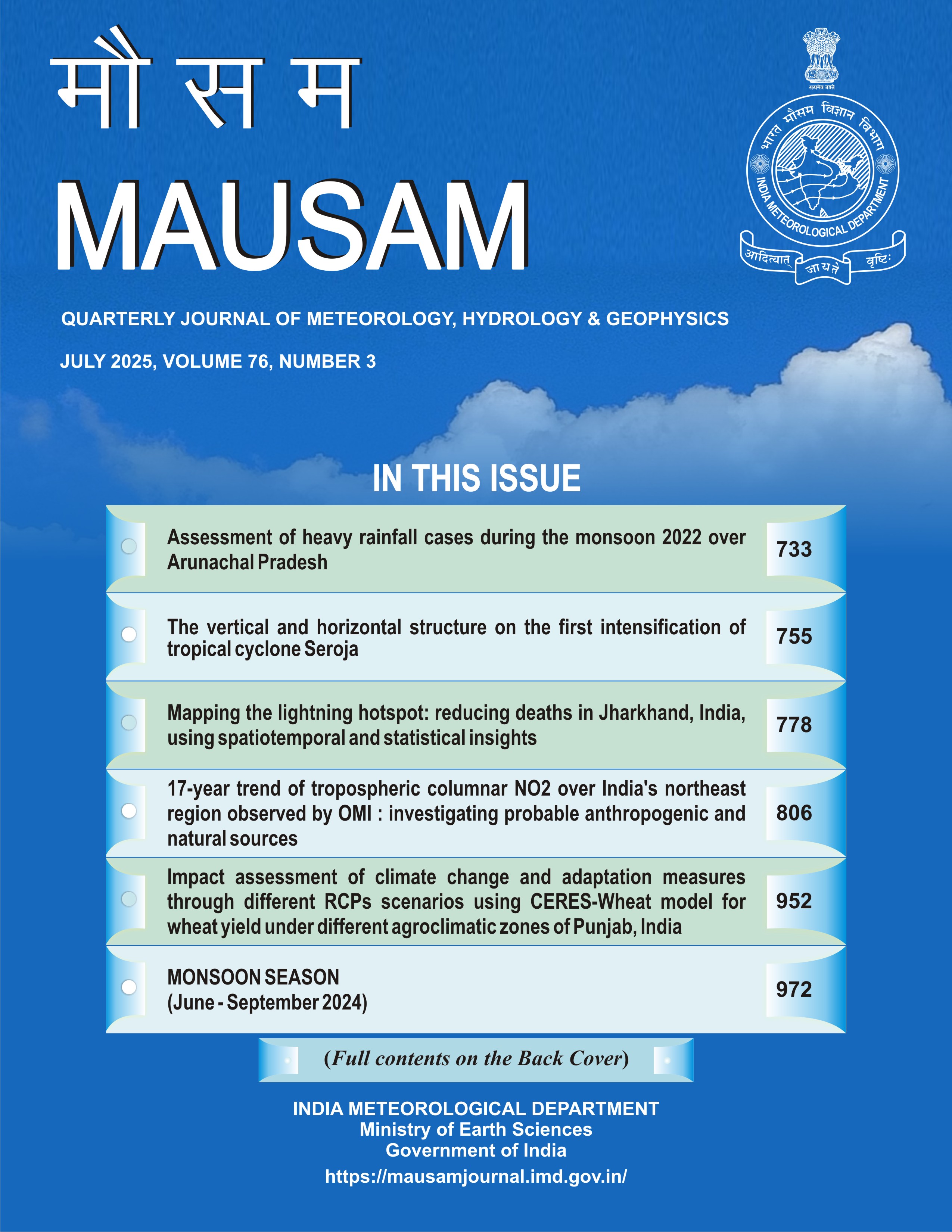Assessment of Heavy Rainfall cases during the monsoon 2022 over Arunachal Pradesh
DOI:
https://doi.org/10.54302/mausam.v76i3.6441Keywords:
Heavy Rainfall, observational-data, IMD-GFS model forecasts, Impact-Based Forecast; Objective verificationAbstract
The performance of IMD-Global Forecast System (GFS) model forecasts is evaluated against observed rainfall data during the southwest monsoon of 2022 for Arunachal Pradesh (ARP). A total of 14 heavy rainfall (HRF) cases were examined when the rainfall exceeds 64.5 mm in 24-hours. With a correlation coefficient (R) of 0.71 between the observed and model day-1 predicted rainfall exhibits a very good agreement, however, R -values were decreased by 2-4% as the forecast lead time increased. In addition, for day-1 model overestimated the observed rainfall by 10-20% and has increased further by 4-6% as the lead time progresses. Interestingly, the model forecasts noticed the 7-homogeneous HRF zones in ARP during the monsoon 2022, whereas the observations noticed only 5 zones. To assess forecast performance further, skill metrics such as Probability of Detection (POD), False Alarm Rate (FAR), Equitable Threat Score (ETS) and Heidke-Kuiper skill score (HK) were computed. Results show that the POD for day-1 forecasts is 0.82, and the FAR is 0.32 indicating a high rate of correctly predicting HRF events. In addition, ETS of 0.43 and HK score of 0.38 suggest moderate model performance. These skill scores decrease by 2-4 percent as lead time increases. Furthermore, the model forecasts are evaluated based on the warning color category (yellow, orange, and red). The results suggest during the days when the yellow alert is given the POD rate is about 0.80, whilst the orange (red) alert days the POD rate is 0.52 (0.25), respectively at one-day lead time. It indicates that the model performs is best in predicting HRF events during the yellow alert days but less accurate for orange, and red alert days for all lead times.
Downloads
Published
How to Cite
Issue
Section
License
Copyright (c) 2025 MAUSAM

This work is licensed under a Creative Commons Attribution-NonCommercial 4.0 International License.
All articles published by MAUSAM are licensed under the Creative Commons Attribution 4.0 International License. This permits anyone.
Anyone is free:
- To Share - to copy, distribute and transmit the work
- To Remix - to adapt the work.
Under the following conditions:
- Share - copy and redistribute the material in any medium or format
- Adapt - remix, transform, and build upon the material for any purpose, even
commercially.



